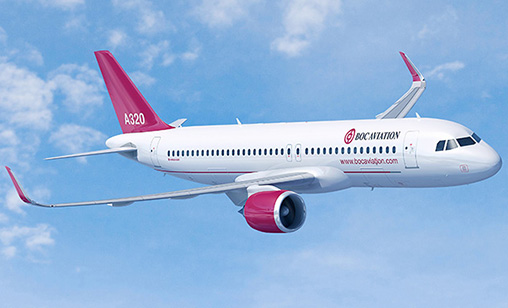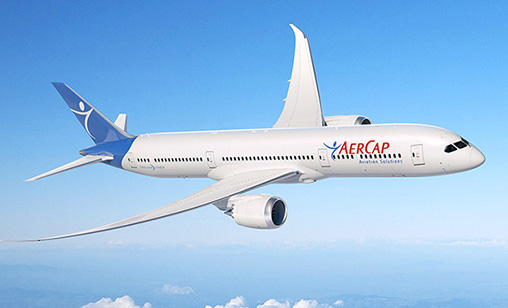Industry Insight Special Report
Regional bonanza beckons for industry lessors
Revenue forecasts for lessors may vary, but it is a sector heading for a business bonanza in the next decade, reports associate editor and chief correspondent, Tom Ballantyne.
June 1st 2024
Numbers crunched by Fortune Business Insights show the aircraft leasing market was valued at $172.88 billion in 2023, will grow to $183.23 billion this year and by 2032 and will be $401.67 billion; an annual growth rate of 11.1%. Read More » Spherical Insights put the market value in 2023 at $154.1 billion and forecasts 7.3% annual growth, hitting $315.9 billion by 2033. Yet another forecaster, Market Research Future (MRF), anticipates the market will reach $312.2 billion by 2030, with annual growth of 8.20%.
These forecasts may differ, but they clearly indicate, as the airline industry recovery continues post-pandemic, commercial aircraft leasing is entering a golden era. And analysts agree much of the growth will be driven by Asia-Pacific airlines. According to MRF, the region will emerge as the fastest advancing market for aircraft leasing in the world, a result of increasing demand for cost-effective aircraft operations and a surge in technological innovation.
 |
 |
 |
“The soaring preference for fuel-efficient aircraft combined with the rampant increase in air traffic across the region has been favorable for the market. The expanding number of leasing vendors, improvements in infrastructure, supportive tax policies and the affordability of available lease rates also could bolster the sector’s growth rate in coming years. Rising air passenger traffic, rapid increases in GDP per capita and the rapid growth of tourism also benefit the Asia-Pacific market,” MRF wrote.
“The region has been witnessing a surge in low-cost carriers, which works in favour of the commercial aircraft leasing market. Also, China has been successful in creating a lucrative aviation leasing industry backed by consistent support from the government as well as government-owned banks.”
Latest financial results from lessors underscore the health of the sector. In March, Singapore-based BOC Aviation posted a record net profit of $764 million for 2023, exceeding 2019’s previous record of $702 million. Revenue improved 7% year-on-year, to $2.5 billion. The numbers reflected underlying growth across the business, combined with insurance settlements for aircraft in Russia, the lessor said. BOC has a fleet of 684 aircraft owned, managed and on order.
Global lessor, AerCap, announced net income of $604 million for the first quarter of 2024. “AerCap continued its strong performance during the first quarter. Our business is performing very well and demand for our aviation assets remains robust,” said AerCap CEO, Aengus Kelly. “During the quarter, we generated adjusted net income of $658 million, adjusted earnings per share of $3.29 and operating cash flow of $1.4 billion. As a result of this strong start to the year, we are raising our earnings guidance for full-year 2024.”
U.S.-based Air Lease Corporation has reported net income of $97 million for first quarter 2024 with revenue of $663 million. “With aircraft in short supply and values rising, we are benefiting from fleet expansion and sales activity in an industry that remains positive. We see this environment continuing for the near to medium term,” AirLease Corp. CEO, John L. Plueger, and executive chairman, Steven F. Udvar-Házy, said.
CAPA’s Centre for Aviation Fleet Database, at February this year, recorded 20,000 leased commercial aircraft at the world’s airlines; 53% of the global airline fleet. “Lessor share of the market is 23%, much lower than their current share of leased aircraft fleets. The difference is explained by sale and leaseback deals whereby aircraft ordered by airlines end up being owned by leasing companies - particularly narrow-bodies. CAPA said leasing accounts for 58% of narrow-bodies and regional jets, but only 45% of turboprops and 43% of wide-bodies.
Dramatic air passenger growth worldwide, combined with the mounting freight volumes, and advancements in aircraft and airport infrastructure especially in developing countries, can be major growth boosters in the industry.
“Moreover, since aircraft leasing offers balance sheet and tax advantages, its demand is expected to soar even more in the years ahead. Latest advancements in the aircraft leasing market include rising trade of industrial commodities, developments in airport infrastructure across emerging nations and globalization. These factors offer a host of attractive opportunities to the leading firms in the aircraft leasing market. Other than this, low lease and interest rates, soaring demand for low-cost carriers and a decline in crude oil prices will provide opportunities for years,” CAPA said.
Polaris Research said “leasing offers them flexibility, quickly adding or removing aircraft from their fleets based on market demand and operational needs.”
Unsurprisingly, narrow-bodies continue to hold the biggest share of the market. “This is primarily attributed to the type’s low fuel consumption that produces significant cost savings for airlines,” agree all major consultancies.
Engine lessor and aviation service provider, WLFC, has finalised a deal with RTX Corporation subsidiary, Pratt & Whitney, for the purchase and lease of a maximum of 15 PW1100G-JM GTF engines, with the deal to be closed by year-end. |
DANIEL RAY says:
August 20th 2024 01:01pm